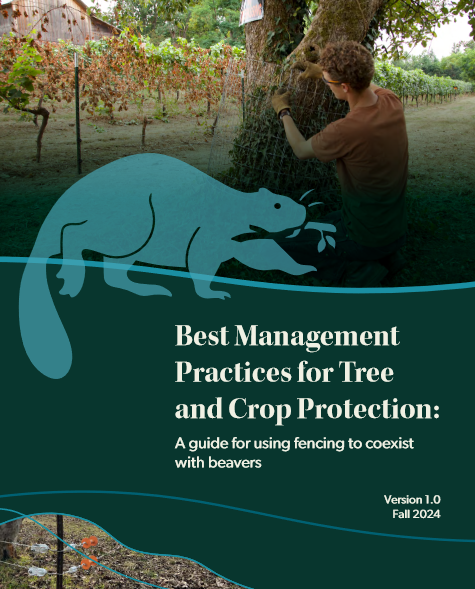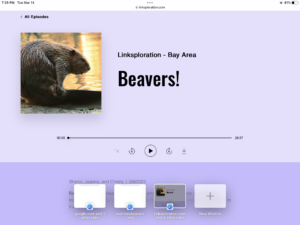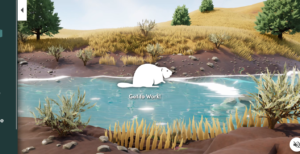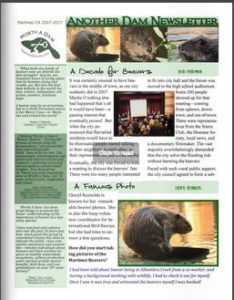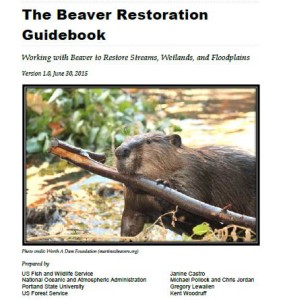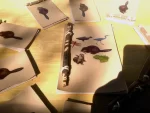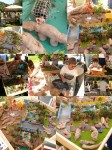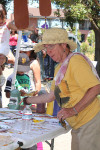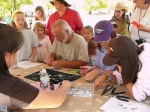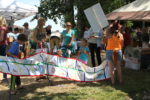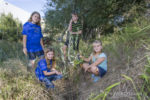Don’t miss Ben’s interview this morning at nine on Jefferson Public Radio in Oregon.


With the news of the horrific Grand Jury report in Pennsylvania, I’ve been remembering a major player in the early story of the Martinez beavers who happened at the time to be a leader at S.N.A.P. (Survivor Network for those Abused by Priests). Joey Piscitelli is a general contractor who lived downtown in a small victorian that happened to be on the same street the beavers moved into. So he was an early observer of their arrival. When the city decided the beavers would be killed Joey used his not inconsiderable connections to the media that he had developed through S.N.A.P. and guided them to the story. I believe it was Joey  who instigated the candle light vigil, but I’m not sure. I couldn’t even attend it because I had to work that evening. The city notes from the November 7, 2007 meeting read:
who instigated the candle light vigil, but I’m not sure. I couldn’t even attend it because I had to work that evening. The city notes from the November 7, 2007 meeting read:
Joey Piscitelli thanked Council for removing the “death threat”. He asked them to listen to the people and keep the beavers. He agreed a committee should be formed to study the matter.
Unlike me, he was not afraid to issue a challenge. I remember one morning after that big meeting he and his wife stopped by to talk about their plans to pressure the state senator. In those early days I was so full of the positive energy of that meeting I completely trusted the process and didn’t want to look ungrateful. I must not have seemed enthusiastic because I don’t think we ever spoke again, I can’t remember him being involved at the april meeting or the sheetpile (by which time my outlook had entirely changed). I’m not sure I heard from him after that.
When I think back to those days I can imagine that he felt he had done a great deal of work to push the heavy rock up the hill, and I swept in a pushed it down the hill getting all the attention.
Of course neither of us could know how many, many more hills there were to come. I never forgot what a crucial role he played, or how much he contributed to keeping the beavers alive. People often misunderstand that November meeting and think it was something I made happen. But I always correct them.
I didn’t make that meeting happen. That meeting made me happen.
In other news the Salmon Coho Confab is just around the corner. With plenty of local and not so local watershed heroes. Of course we all know who will be the furry flat-tailed wonder of that meeting.

Three-day symposium focuses on coho salmon
Fisheries scientists will visit the South Fork of the Smith River next week for a symposium focusing on the endangered coho salmon.
Held Aug. 24–26, the Salmonid Restoration Federation’s 21st-Annual Coho Confab will focus on watershed restoration, techniques and efforts to help coho salmon recover. The symposium will be held at Rock Creek Ranch and will include tours of stream and valley floor restoration efforts in the Lower Klamath tributaries as well as a tour of large woody debris projects led by Dan Burgess, of California State Parks.
The people who will be presenting at the symposium include Michael Pollock, who promotes the use of beavers, which had been native to a lot of coastal streams in California and create deep pools, helping to rehabilitate lower parts of the Smith River, according to Stolzman.
You can tell not even the reporter quite believes that beavers matter to this story, but that’s why we bring out the big guns. Hurray for Michael Pollock and our friends at OAEC and we hope this can change some hearts and minds!
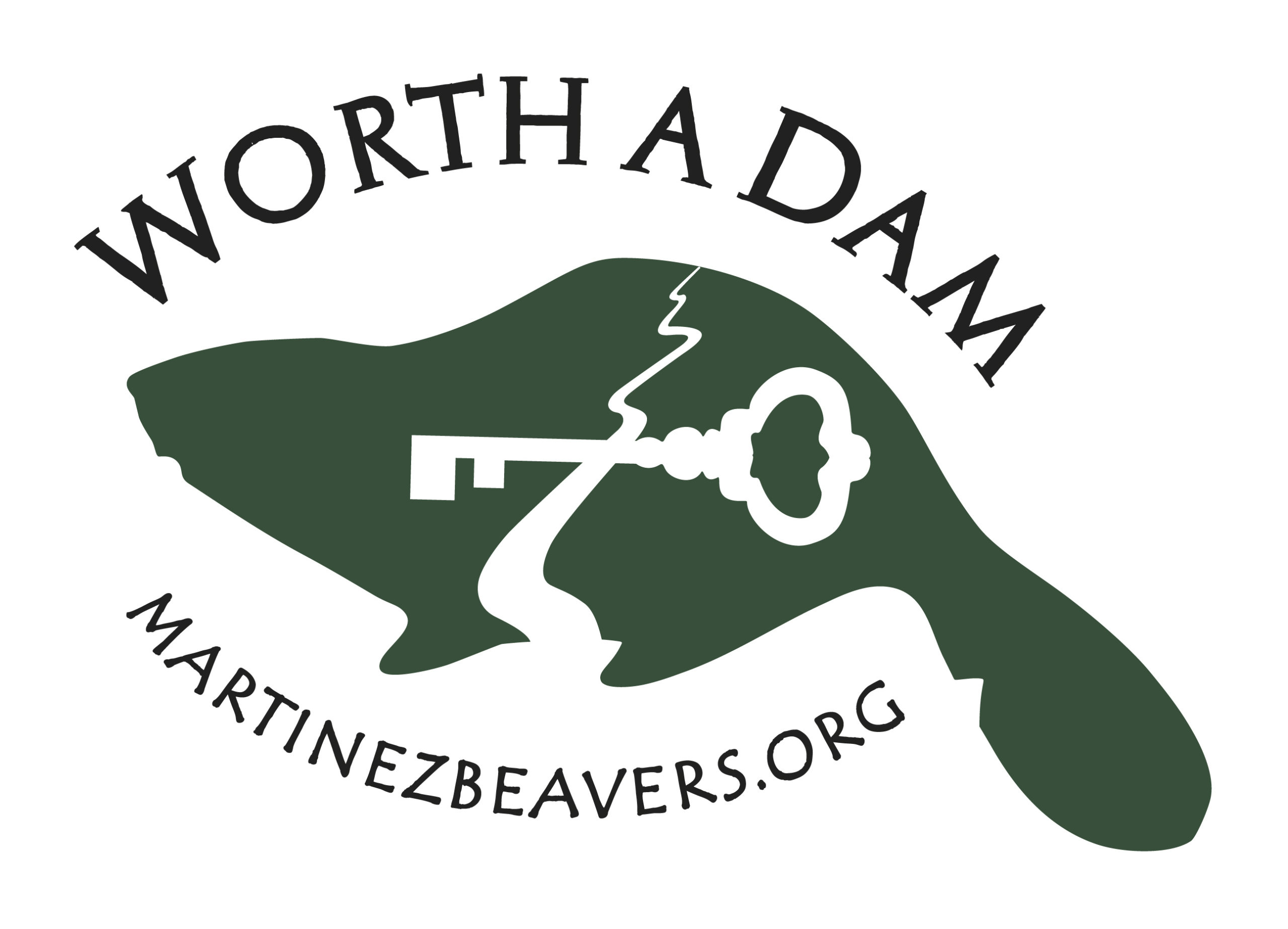

 Covering 900 acres north of Warrenton, The Clifton Institute focuses on environmental education, ecological research and restoration for native plants and animals.
Covering 900 acres north of Warrenton, The Clifton Institute focuses on environmental education, ecological research and restoration for native plants and animals. “There’s incredible diversity in our own backyards and people don’t realize. Just by showing people what we have here, I think they are going to want to have a lighter hand.
“There’s incredible diversity in our own backyards and people don’t realize. Just by showing people what we have here, I think they are going to want to have a lighter hand. As an environmental journalist covering wildlife management and conservation biology, Ben Goldfarb has written extensively about birds, bears, fish, and more for periodicals such as Mother Jones, Science and Orion, but it was beavers, of all critters, that inspired him to write a book.
As an environmental journalist covering wildlife management and conservation biology, Ben Goldfarb has written extensively about birds, bears, fish, and more for periodicals such as Mother Jones, Science and Orion, but it was beavers, of all critters, that inspired him to write a book.  And what a book it is! While fantastically well researched, “Eager” rarely — if ever — gets bogged down by its own comprehensive heft. This is a function of Goldfarb’s genuine enthusiasm for his subject, his healthy appreciation for the humor inherent in smelly, buck-toothed rodents, and his entertaining way with words.
And what a book it is! While fantastically well researched, “Eager” rarely — if ever — gets bogged down by its own comprehensive heft. This is a function of Goldfarb’s genuine enthusiasm for his subject, his healthy appreciation for the humor inherent in smelly, buck-toothed rodents, and his entertaining way with words.  unturned in his investigation, visiting 12 US states and the UK to interview and “go into the field,” i.e., wade into the pond, with everyone from wildlife management biologists to civilian enthusiasts of various stripes, the whole range of “Beaver Believers.” The takeaway — that, contrary to popular opinion, beavers and humans can live harmoniously — is practically a foregone conclusion; it’s the getting there in Goldfarb’s company that makes it entirely worth your time.
unturned in his investigation, visiting 12 US states and the UK to interview and “go into the field,” i.e., wade into the pond, with everyone from wildlife management biologists to civilian enthusiasts of various stripes, the whole range of “Beaver Believers.” The takeaway — that, contrary to popular opinion, beavers and humans can live harmoniously — is practically a foregone conclusion; it’s the getting there in Goldfarb’s company that makes it entirely worth your time.


 My interview yesterday on BYU radio was fun and very polite. Marcus Smith started it off by saying Heidi Perryman of Worth A – oh goodness I need to swear on the radio – dam. He let me tell the story the way I wanted. Marcus seemed genuinely pleased that I was a civilian and asked a whether being a child psychologist helped me plan the festivals or fight the city, which I liked very much because people don’t usually act like it has anything to do with it. They were going to talk to Ben Goldfarb later in the day. I think I did okay, it will air in a couple weeks and I’ll give you the link then. The only odd part was that the host and his helpers were so polite – letting me say as much or little as I wanted – that sometimes I wasn’t totally sure they were paying attention and not, you know, checking their nails or something,
My interview yesterday on BYU radio was fun and very polite. Marcus Smith started it off by saying Heidi Perryman of Worth A – oh goodness I need to swear on the radio – dam. He let me tell the story the way I wanted. Marcus seemed genuinely pleased that I was a civilian and asked a whether being a child psychologist helped me plan the festivals or fight the city, which I liked very much because people don’t usually act like it has anything to do with it. They were going to talk to Ben Goldfarb later in the day. I think I did okay, it will air in a couple weeks and I’ll give you the link then. The only odd part was that the host and his helpers were so polite – letting me say as much or little as I wanted – that sometimes I wasn’t totally sure they were paying attention and not, you know, checking their nails or something, Ohh it was such an adventure to go to
Ohh it was such an adventure to go to  BYU Radio is a talk radio station run by Brigham Young University in Provo, Utah. Operating at Sirius XM channel 143[1] (and in northern Utah on 89.1 MHz HD-2), it is known on-air as BYU Radio. The station features entertaining and informational talk programming,. Marcus Smith serves as radio services manager for BYU Broadcasting, where he oversees both BYU Radio and Classical 89. His most prominent public role, however, is as host of Thinking Aloud,
BYU Radio is a talk radio station run by Brigham Young University in Provo, Utah. Operating at Sirius XM channel 143[1] (and in northern Utah on 89.1 MHz HD-2), it is known on-air as BYU Radio. The station features entertaining and informational talk programming,. Marcus Smith serves as radio services manager for BYU Broadcasting, where he oversees both BYU Radio and Classical 89. His most prominent public role, however, is as host of Thinking Aloud, Millions of years ago, ancient land-dwelling
Millions of years ago, ancient land-dwelling 
 Last night we talked beavers at Safari West, and since there’s a good chance I won’t have wifi there, I thought it would be a good idea to have a pre-recorded Vermont article that’s worth sharing, Enjoy!
Last night we talked beavers at Safari West, and since there’s a good chance I won’t have wifi there, I thought it would be a good idea to have a pre-recorded Vermont article that’s worth sharing, Enjoy! Vt Fish & Wildlife Installing Water Control Devices on Beaver Dams
Vt Fish & Wildlife Installing Water Control Devices on Beaver Dams

